SPECIAL REPORTS
Date: 10 December 2019 Author: Grzegorz Kuczyński
Sweden Faces the Russian Threat in the Baltic Sea
By beefing up its military presence in the exclave of Kaliningrad, flying provocative air patrols and by building next legs of the Nord Stream energy pipeline, Russia undermines the security of other countries in the Baltic region. Also, Moscow could take advantage of the pipeline’s energy infrastructure to take subversive actions in the Baltic.
- NATO’s three Baltic members – Estonia, Latvia, and Lithuania – are most vulnerable to Russian military aggression. They all have a resource base in Finland and Sweden, albeit on the other side of the sea. How these non-NATO countries will respond may emerge the key to success for either party’s victory in a possible war between Russia and the military bloc in the Baltic Sea.
- Though neither Finland nor Sweden is likely to join NATO in the ensuing years, these two are trying their utmost to bolster their military position in the face of a Russian threat. This will in turn strengthen the combat capabilities of both the Baltic States and Poland, not to mention NATO’s status in the Baltic Sea.
- An armed conflict between Russia and Sweden can only break out if Moscow goes to war with NATO member states in the region. Russia would aim to occupy strategically located points in the Baltic Sea and to intimidate mainland Sweden, a scenario taken into account by the Swedish military that focuses on developing its air defense as well as air and naval capabilities.
- Sweden is bolstering defense capabilities by expanding its own armed forces and bringing back some of its Cold War-era military solutions, enhancing partnership with neighboring Finland, nurturing military ties with the United States, taking actions to provide regional defense and –– last but certainly not least –– by boosting its collaboration with the North Atlantic Alliance.
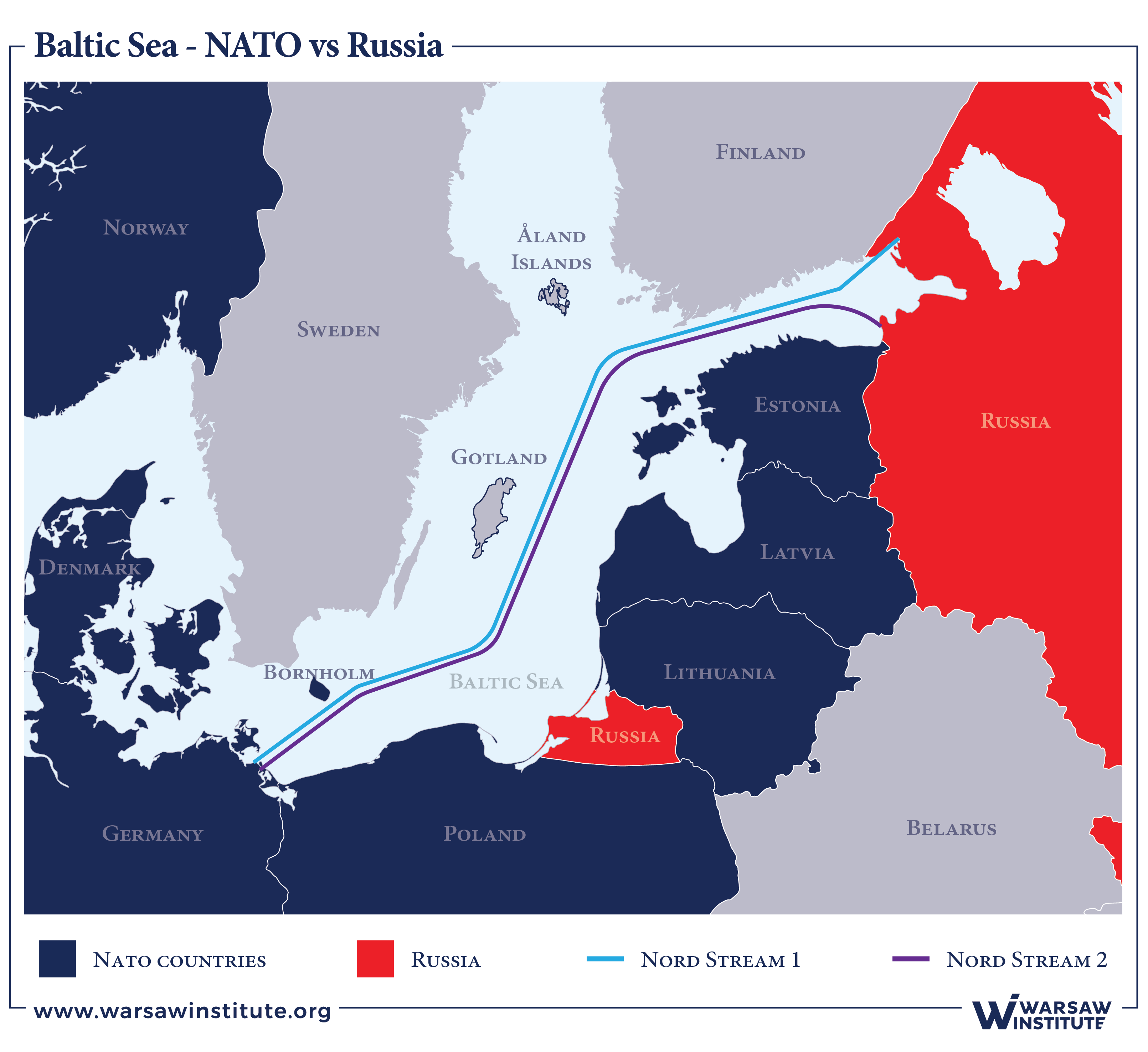
A new nothern war?
What stands as Moscow’s top goal in the Baltic Sea is to safeguard its current influence across the region. In its worst-case scenario, the Kremlin sees non-aligned Finland and/or Sweden joining the NATO military bloc in a move that could radically shift the military and political picture in this European region to the detriment of Russia’s interests. High on Moscow’s list of priorities are any actions barring Sweden and Finland from being formally invited to NATO. Russia should be aware of yet another unfavorable scenario: in the event of a war breaking out between Russia and NATO countries in the Baltic region, Sweden and Finland, though formally neutral, would take the side of the Alliance, also by allowing their use of military facilities, airfields and naval ports. Russia is therefore beefing up its military presence in the Baltic Sea region to neutralize any adverse effects if such a scenario became a reality. Moscow for the past few years has centered its military activities and plans on both NATO-member states Estonia, Latvia, Lithuania, Poland, Germany and Denmark as well as Finland and, more importantly, Sweden, eyeing the last two as potential enemies.
The geography of the Baltic Sea resembles that of the Black Sea; with its waters cut off from any other bodies of water, the Baltic Sea is for Russia a kind of a strategically important window to the world. But Moscow’s position in the Baltic Sea is far worse than that in the Black Sea (read more in our special report Mare Nostrum Strategy: Russian Military Activity in the Black Sea). Except for the Russian exclave of Kaliningrad, the majority of the Baltic’s southern territories belong to the countries that are part of the North Atlantic Alliance. Furthermore, NATO is capable of closing the Danish straits connecting the Baltic Sea to the North Sea; though these are formally international waters, Denmark is a member of the military bloc. In the event of a war, Russian naval assets in the Baltic Sea will be completely cut off from the country’s fleet. Moreover, there are also some strategically located islands, all of which of tremendous significance for shipping in the Baltic Sea. These are three more plausible obstacles on the route between the North Sea and the Gulf of Finland, which are a Danish island, Bornholm, Sweden’s Gotland and the Åland Islands, all these off the southern direction. The Åland archipelago shuts off access to the Gulf of Bothnia. Neither Sweden nor Finland’s military capabilities are a threat to Moscow. What counts most is geography, with particular focus on control over critical points in the Baltic Sea whose preponderant role dates back to Russia’s earlier conflicts with Western countries in the region, including the Crimean War of 1853–1856 or the Allied intervention in the Russian Civil War of 1918–1920. If Sweden and Finland joined NATO in its war against Russia, or at least allowed the military bloc to use its territories, waters and airspace, the Alliance would gain a tremendous advantage in the Baltic Sea, with both the region of Kaliningrad and St. Petersburg being isolated from the rest of mainland Russia.
 Kronstadt, July 28, 2019. Russia’s naval parade. Source: KREMLIN.RU
Kronstadt, July 28, 2019. Russia’s naval parade. Source: KREMLIN.RUMoscow is assuming that both Sweden and Finland are highly likely to take sides with NATO. This is both due to these two’s ever-closer defense-cooperation efforts, also in the area of joint military drills, and their high involvement in EU defense initiatives like Permanent Structured Cooperation, or PESCO. It is worthwhile to bear in mind a unilateral declaration of solidarity issued in 2009 to the EU Member States as well as Norway and Iceland.[1] Nothing has changed after a decade, as exemplified by the content of the white book Defensive power – Sweden’s Security Policy and the Development of its Military Defence 2021–2025, published in spring this year. “Sweden will not remain passive if another EU Member State or a Nordic country suffers a disaster or an attack. We expect these countries to take similar action if Sweden is affected. Sweden must therefore be able to both give and receive civil and military support,” reads the paper.[2] What keeps both the Swedish and Finnish armies away from the war is, among other things, Russia’s ever-growing military capabilities across the region. Moscow’s top goals are to intimidate Stockholm and Helsinki and to bar these two from getting involved in a potential armed conflict. It is worthwhile to note that Russia is enhancing combat capabilities of its Western Military District that covers an area of 25 federal entities, including those of Moscow and Kaliningrad, and holds vital importance as the top frontline of the NATO-Russian confrontation. The district borders four NATO countries (Estonia, Latvia, Lithuania, Poland), as well as Finland, Belarus and Ukraine. Between 2016 and 2018, more than 70 large units and military formations, including two divisions and three brigades, were created within its territory. The military build-up came at a time of heightened activity of Russia’s air forces in the Baltic region that manifested itself in a series of provocations that targeted both NATO-flagged aircraft and vessels and those of Sweden and Finland, formally non-aligned. What is noteworthy is that this happened shortly before Russia annexed Crimea in 2014 in a move that brought fresh strains between Moscow and the West.
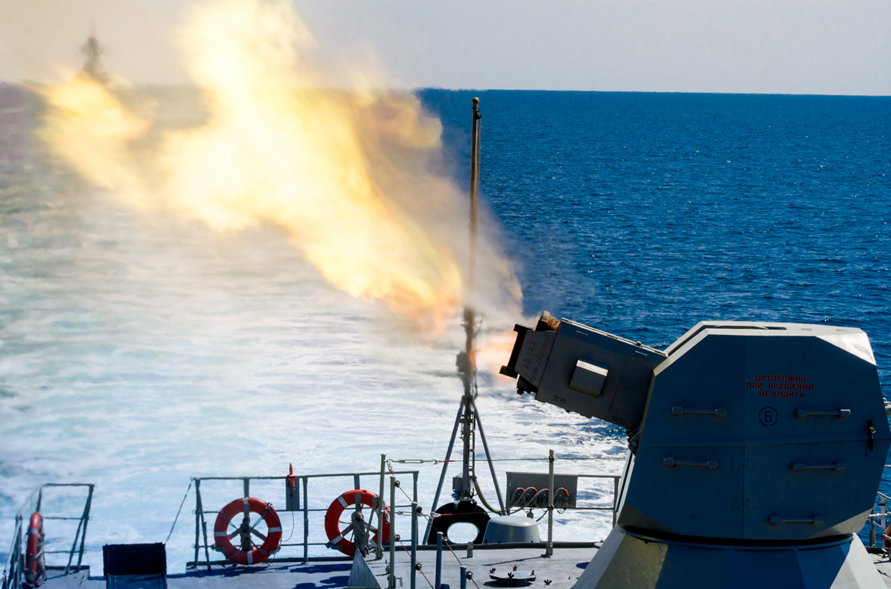 Russian military exercise. Source: MIL.RU
Russian military exercise. Source: MIL.RUForced Neutrality
In March 2013, the Swedish radars detected six fast planes coming from the east: a pair of Russian Tu-22M3 strategic bombers, escorted by some of Su-27 fighter jets. Before turning back, the Russian military mounted what was later branded by NATO as a dummy nuclear attack, targeting Swedish military facilities right off the border. Having no fighter that could be scrambled to intercept the intruder, the Sweden Air Forces failed to react to the Russian danger, a situation that shows how poor Sweden’s military potential was at the time. In an interview with Svenska Dagbladet, a country’s daily, Sverker Göransson, who then served as the supreme commander of Sweden’s military, said Sweden’s army could hold out for no more than a week, only in some regions. This stirred up an intense debate over the state of the Swedish defense. In September 2014, Russia sent yet another warning signal when two of its Su-24 bomber jets crossed into Sweden’s airspace in what was later labeled as the most serious air incursion for over a decade. In October 2014, Sweden’s armed forces said that they had spotted a mysterious foreign vessel in the waters off Stockholm’s archipelago. In March 2015, Russia’s military staged large-scale war games in the waters south and north of Sweden and Finland’s coastlines. Some 30,000 Russian servicemen rehearsed a military takeover and seizure of Gotland, Danish island Bornholm, Åland islands and northern Norway.
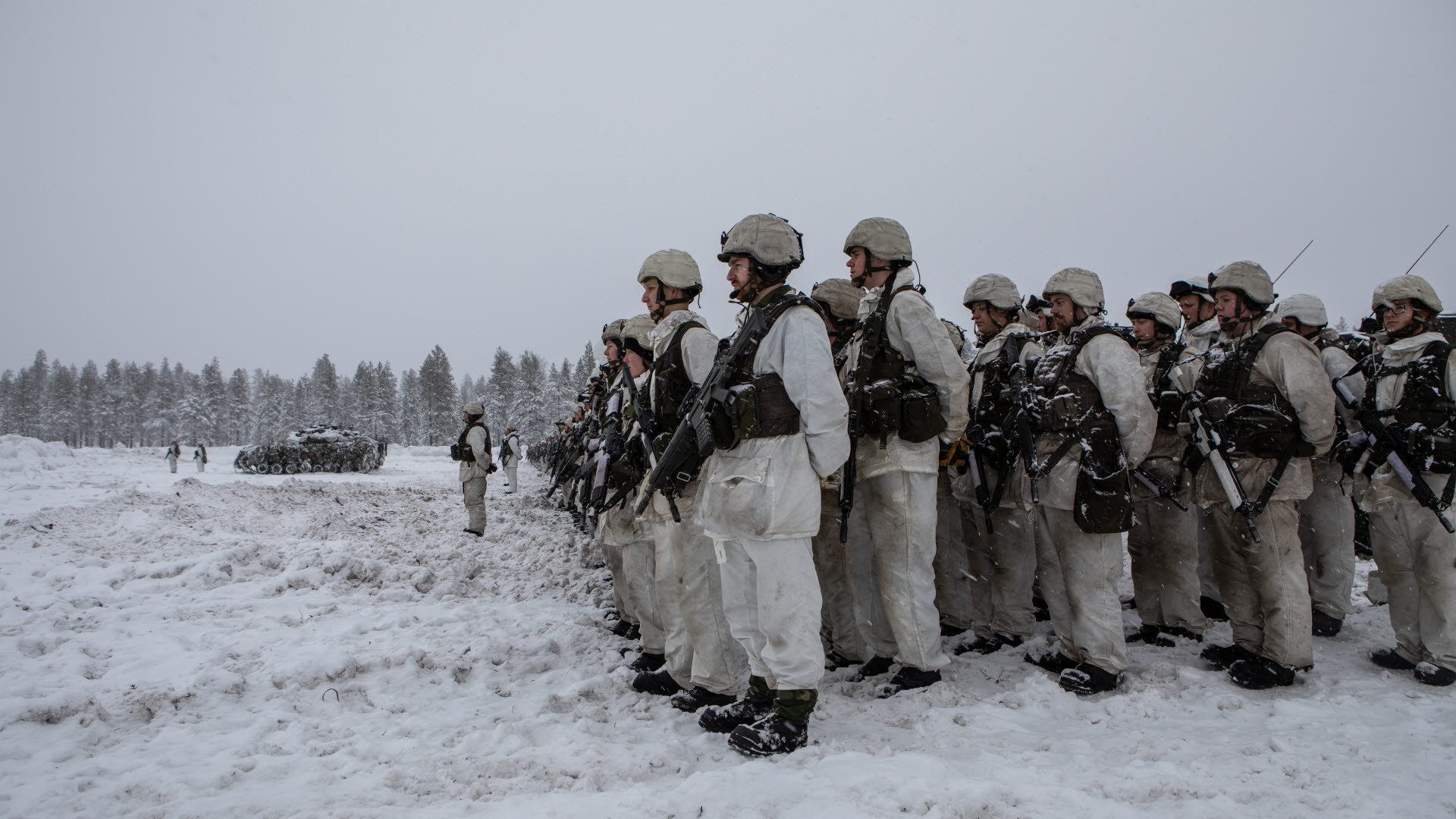 The Swedish 192nd Mechanized Battalion during the Northern Wind 2019 military exercise. Source: Jesper Sundström/Swedish Armed Forces
The Swedish 192nd Mechanized Battalion during the Northern Wind 2019 military exercise. Source: Jesper Sundström/Swedish Armed ForcesWith belligerent military steps came threats from politicians. In June 2015, Russia’s ambassador to Sweden, Viktor Tatarintsev, threatened countermeasures if Russia joined NATO, saying that the country will have to reorientate its troops and missiles.[3] A dozen or so months later, in December 2016, the diplomat made a comment in an interview with Swedish public broadcaster SVT, assuring that Moscow “has no plans whatsoever to invade Sweden.”[4]On June 1, 2017, Russian President Vladimir Putin said Russia is by no means Sweden’s enemy, yet adding that “if Sweden joins NATO, it will of course have a negative effect on our bilateral relations.” To us, it means that the military bloc is expanding towards out borders from the Swedish territory, and we have to think about how to respond to an extra threat[5].” In an interview with Dagens Nyheter, a Swedish daily, Russia’s Foreign Minister Sergey Lavrov warned Moscow would take military measures if Sweden decided to join NATO.[6] “It is one thing to have neutral neighboring countries in the north, and another to have neighbors who are members of the North Atlantic alliance,” Lavrov was quoted as saying, though not revealing what measures Russia could potentially employ. Asked about a diplomatic chill between Moscow and Stockholm, Lavrov noted that Sweden is to be blamed. “Stockholm froze all contacts with us and joined the EU sanctions,” Lavrov pointed out.[7] In April 2018, Russian missile forces staged the exercise some 50 kilometers from the Karlskrona Naval Base, the Swedish navy’s largest base. Ferries between Poland’s Gdynia and Sweden’s Karlskrona had therefore to change their usual route. In his speech at the Defense Ministry, Russian Defense Minister Sergei Shoigu on July 24, 2018, criticized Finland and Sweden’s enhanced cooperation with NATO, branding it as somewhat “worrying” and adding that this forces Russia to “take countermeasures.” The year 2019 has seen some of Moscow’s belligerent actions, also when a Russian fighter jet on February 19 approached a Swedish reconnaissance plane at a distance of fewer than 20 meters.
Demobilization and mobilization
Peter Hultqvist, the defense minister of Sweden, said at the 2016 Munich Security Conference that “Russia is the biggest challenge to Europe’s security.” Sweden has since then performed quite well to bolster its security in line with what was known as the “Hultqvist Doctrine.” The strategy shifted the emphasis of national defense on remaining outside NATO while enhancing the country’s partnership both with the military bloc and with the United States and Finland, the latter in the form of bilateral agreements. Recent years have brought a set of military deals, including the one that facilitated NATO’s use of Swedish territory. Sweden is simultaneously making efforts to expand its defense capabilities. The country reintroduced military conscription amidst the concept of Sweden’s total defense while the island of Gotland became what could be referred to as a critical military stronghold.
Like many of its fellow Western peers, Sweden did not take any steps to rebuild its defense potential until 2014, after Russia showcased its belligerence. A neutral country, Sweden could boast of its impressive military stockpile in the time of the Cold War, yet quickly dismantled sometime after it ended. Sweden’s military spending dropped sharply from about 2.5 percent of GDP in 1990 to barely 1 percent in 2010. Equipment was scrapped and bases were closed down while naval shipyards were sold off to German engineering company Thyssen Krupp. Stockholm reduced the number of its servicemen, asking them to increase combat readiness to participate in missions overseas. The country’s territorial defense system basically ceased to exist. Back in 1990, the Swedish Armed Forces comprised a total of 100,000 active-duty soldiers, with another 350,000 trained reserves available. The country’s air forces included 300 combat aircraft and the Navy operated a fleet of 40 warships and 12 submarines. Over the next two decades or so, the Swedish military lost over 50 percent of its operational combat units, over 60 percent of its aircraft and around 30 percent of its fleet. What served as the culmination of Sweden’s disarmament efforts was the suspension of the conscription system in favor of a recruitment system on voluntary terms. The decision took effect on July 1, 2010, and this marked the time when Stockholm grew aware of the security issues that concerned its immediate neighborhood. In its 2009 security strategy, Swedish authorities put forward the possibility of crises and conflicts across the region while bringing back, at least partly, the idea of territorial defense. Sweden also moved to strengthen military partnerships with Nordic countries and NATO. In 2011, Sweden deployed some of its Gripen fighters as part of the NATO-led Libya campaign, though these were excluded from direct combat missions. Even though Sweden’s feasible membership in the military bloc was not at all raised back then. In the wake of the NATO summit, held in May 2012 in Chicago, Swedish Prime Minister Fredrik Reinfeldt said that Sweden’s plan to join the military bloc was no longer valid. This yet has changed after Russia invaded Ukraine. Sweden’s Deputy Prime Minister Jan Björklund on March 12, 2014, said “the crisis highlighted our military weaknesses. We must strengthen our military presence and combat capabilities in the Baltic Sea region. But Sweden’s membership in NATO is the best long-term solution.”[8] The Hultqvist Doctrine shifted the emphasis of national defense on remaining outside NATO while enhancing the country’s partnership both with the military bloc and with the United States and Finland, the latter in the form of bilateral agreements.
 A Swedish-Finnish brigade was formed to take part in the Northern Wind 2019 drills, marking an event that had never occurred before. Source: forsvarsmakten.se
A Swedish-Finnish brigade was formed to take part in the Northern Wind 2019 drills, marking an event that had never occurred before. Source: forsvarsmakten.se It was, however, not until 2018 that Sweden made what could be seen as a decision for boosting its defense potential. Sweden has first and foremost reintroduced a post-Cold War era strategy based mainly on total defense capabilities. In the event of a conflict, Sweden is bound to adopt a Total Defenae strategy. Any person who lives in Sweden and is between the ages of 16 and 70 can be called up to assist in various ways. The duty to contribute to Sweden’s total defense has three forms: conscription into the armed forces, civil recruitment into organizations as indicated by the government and national service that consists in performing adequate tasks and serving in organizations that must function even in the event of a war.[9] In 2020, the Swedish Armed Forces will be running the Total Defence 2020 training exercise. Sweden’s government allocated $510.5 million to implement the first phase of its defense proposals that are believed to become operational by 2025.[10] In 2018, Sweden voted to partially reintroduce military conscription, with 4,000 recruits being annually selected for basic military training. Also, Swedish lawmakers agreed to buy four U.S.-built Patriot firing units, with the first delivery expected to reach the country in 2021. Sweden’s current air defense system does not protect the country against ballistic missiles. In its February 2019 report, the Swedish Defence Research Agency (FOI) said Russia now practices how to start and conduct large-scale war. Not surprisingly, the May 2019 proposals of Sweden’s Defense Commission, which comprises government officials and members of the eight parties of the Riksdag, flashed a possible Russian attack on Sweden, therefore putting forward a plan to increase defense expenditure and expand military personnel to 50,000 servicemen within six years.[11] Swedish politicians rushed to put these plans into practice. In August 2019, the country’s ruling coalition and some of the opposition members published a white book on defense spending. The document, among other things, provides for the funds for the development of civil defense in 2021–2025. So how does Sweden plan to increase its total defense capabilities in the years that follow?
Sweden’s development strategy
In May 2019, the Swedish Defense Commission presented its final report Defensive power – Sweden’s Security Policy and the Development of its Military Defence 2021-2025 to Sweden’s Minister of Defense, a roadmap that outlined any challenges to the security environment both in Sweden and in its close vicinity. The new paper served to complement the earlier report Resilience – the Total Defence Concept and the Development of Civil Defence 2021–2025, with both white books setting out a coherent and actual defense strategy for Sweden in 2021–2025. According to the report, Sweden will be able to fight off the attack for three months, an assumption that yet requires both military reforms and an increase in defense spending. Both demands were regulated by Sweden’s national defense strategy for 2021–2025 (May 2019) and the defense agreement, signed in August 2019. But how will the Swedish government gain money to materialize its plans? In 2016, spending stood at 1.1 percent of GDP, or 43.3 billion Swedish crowns, up from 40 billion Swedish crowns in 2015. The country’s military expenditure is now proposed to increase by 9 billion Swedish crowns for 2020. Yet this is still too little, which is why the Swedish authorities on August 30, 2019, stated a goal of reaching defense expenditure of 1.5 percent of the GDP, or roughly 84 billion Swedish crowns, by 2025. In addition to a further increase in military spending, a bill approved by Swedish lawmakers back in December 2018, the country’s decision-makers agreed to boost defense spending by 5 billion Swedish crowns a year from 2022 to 2025. The extra funds for the military will be financed by an increase in bank levy.[12]
The strategy provides for reorganizing existing units and adding extra personnel and equipment resources, as well as by establishing new groups. In the event of a war, Sweden’s land forces should be regrouped into three mechanized brigades, each consisting of three mechanized battalions. As part of the war-time organization of the military, the report provides for establishing a reduced motorized unit, mainly to defend the country’s capital.[13] What is a new solution is to prepare a brigade ready to assist Finland. The total number of army positions will amount to around 90,000 persons, including the military personnel and civilians, from the present 60,000 persons. The number of conscripts is also set to grow by 2024, to 8,000 new recruits annually. The report proposes the upgrading of battle tanks and fighting vehicles, the purchase of artillery systems, including 48 guns of the Archer self-propelled howitzers, as well as the acquisition of both U.S. Patriot systems and much lighter man-portable anti-aircraft missile systems.
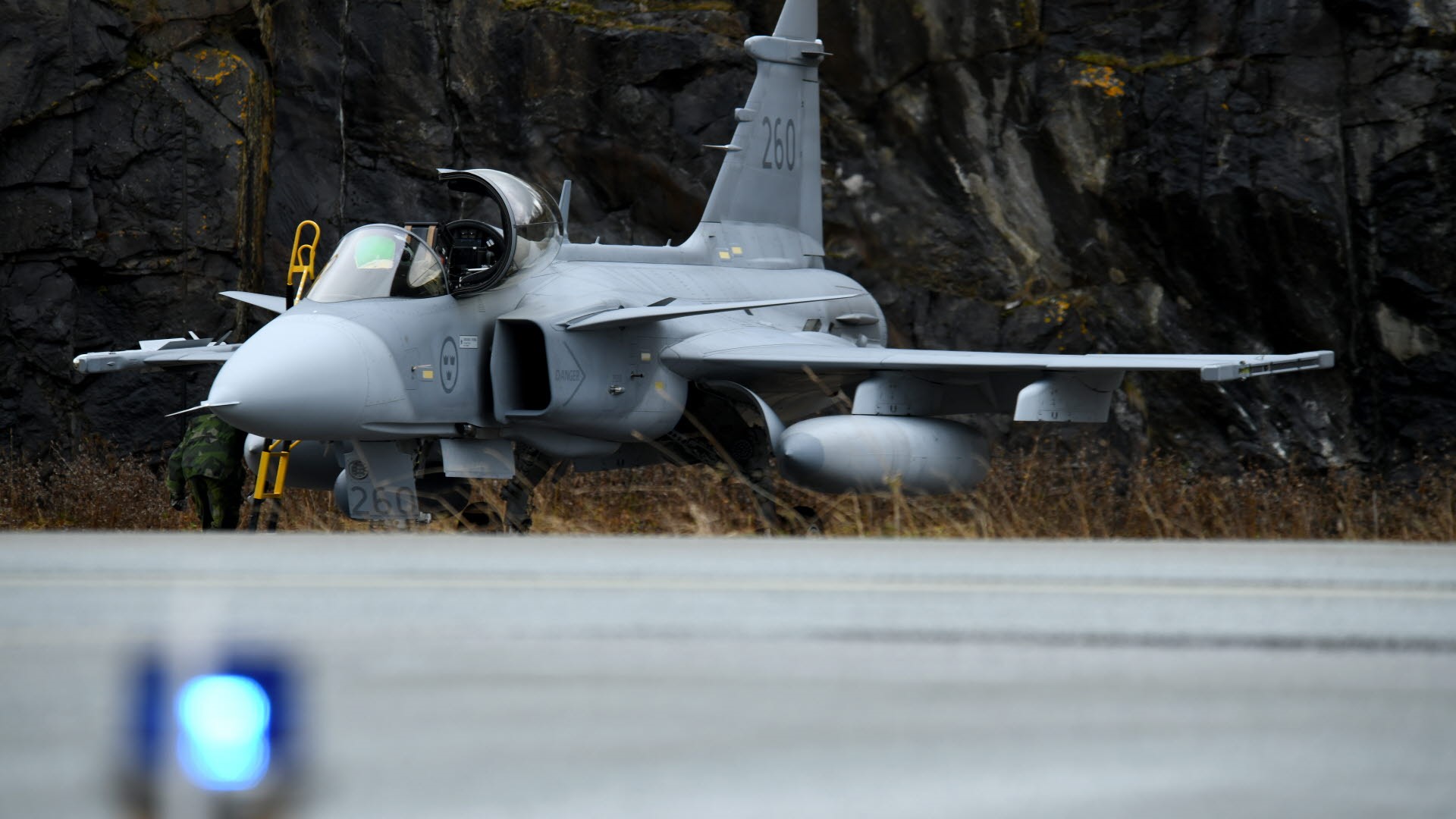 Sweden’s Gripens were also deployed at one of the NATO exercises called Trident Juncture 18. Source: forsvarsmakten.se
Sweden’s Gripens were also deployed at one of the NATO exercises called Trident Juncture 18. Source: forsvarsmakten.seIn its white book, the Commission demanded that the defense of Gotland, Sweden’s strategically located island province, be strengthened, with extra servicemen and artillery added as part of a combined mechanized battlegroup. The island is roughly 90 kilometers off mainland Sweden, 130 kilometers from Latvia and only 248 kilometers from the Russian exclave of Kaliningrad. Lieutenant General Ben Hodges, who would serve as the commanding general of the U.S. Army forces in Europe, visited Gotland in the summer of 2017. “You have a strategically very important task here,” he was quoted as telling Swedish troops. “I do not think there is any island anywhere that is more important.”[14] Stockholm does not seem to believe in Russia’s overt aggression against Sweden. What is more apparent than just a land offensive in the country’s north or air raids on the capital is an incursion of “little green men” on the island of Gotland. And Moscow is likely to trigger off a similar situation and dispatch its battalions to the Swedish island under the pretext of shielding a part of the Nord Stream energy pipeline running nearby. The deployment of Russian-built anti-aircraft defense systems, especially if coupled with an anti-access/area denial (A2AD) bubble in the exclave of Kaliningrad, would permit to shut access to the northern Baltic Sea from the air. If Russia expanded its military build-up and later invaded the Baltic States, this would leave NATO allies with practically no room for help or maneuver. Supreme Commander of the Swedish Armed Forces Micael Byden ordered on July 1, 2019, to boost Gotland’s air defense by dispatching an RBS 23 ground-to-air missile defense system. The island has already eight LvKv 9040 self-propelled anti-aircraft weapons. Earlier Sweden had deployed an RBS-15 Mk 2 anti-ship missile system, fired from land into the water.
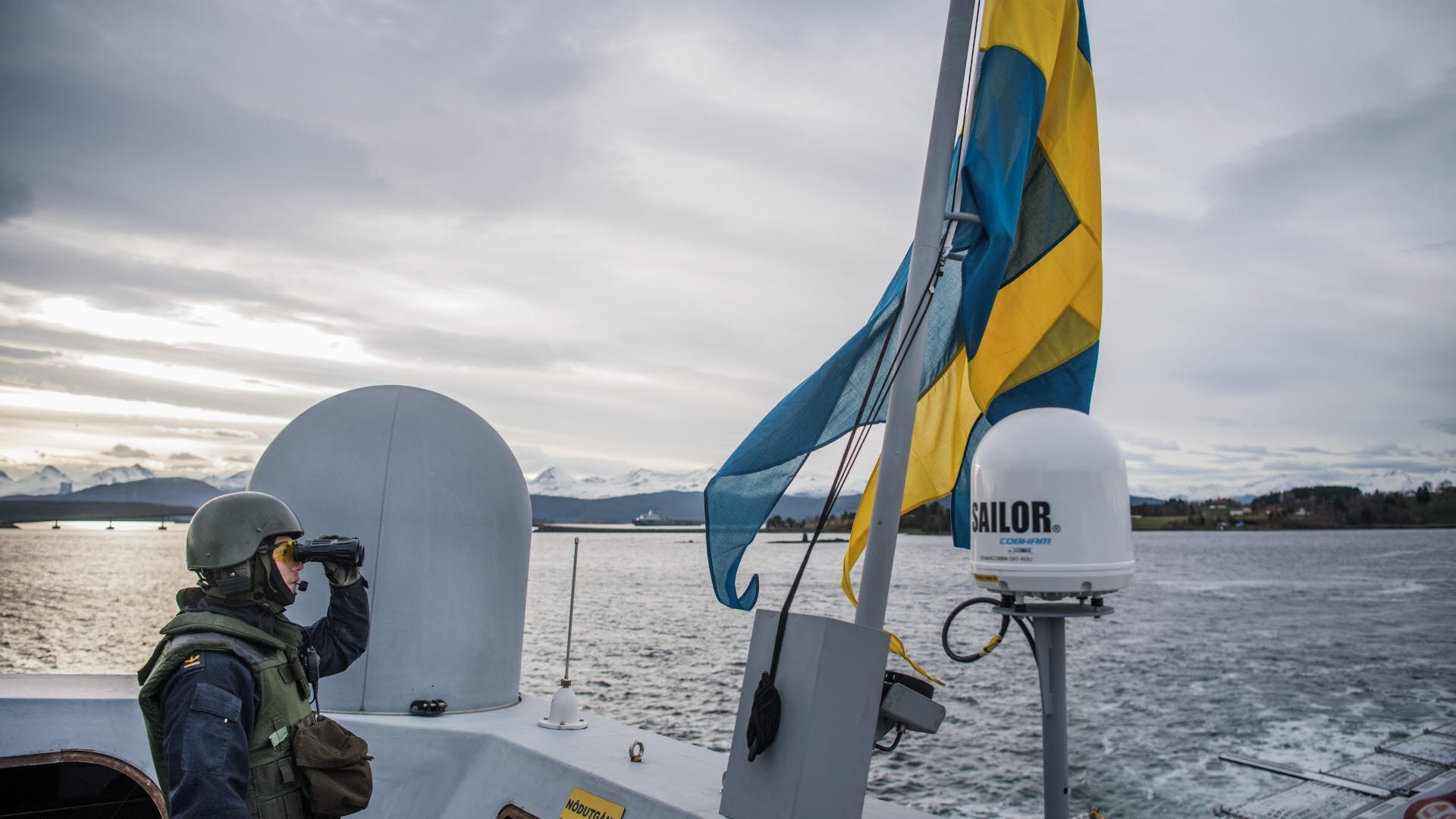 Aboard HMS Nyköping. Source: forsvarsmakten.se
Aboard HMS Nyköping. Source: forsvarsmakten.seWith their 90 Gripen fighter jets (C/D), the Swedish Air Force is the most powerful branch of the Kingdom’s total defense. In a few years, Sweden is due to receive a batch of sixty Gripen Es. Sometime after 2025, the country will kick off the serial production of a new-generation fighter jet, expected to oust JAS 39 C. The Air Staff relocated its headquarters to Uppsala from Stockholm in a move to respond appropriately to the mounting threat from the east. Air forces will be moved to new locations to counter the Russian threat adequately. The Defense Commission believes that the core of the Air Force will be six fighter squadrons between 2021 and 2025. In the early 2030s, the Swedish Air Forces will dispose of the newest version of its Erieye early warning systems. Sweden’s naval fleet is the second most important branch of the country’s armed forces. Under the roadmap for increasing Sweden’s combat skills, the five Visby-class corvettes will be upgraded with new equipment. The number of submarines will rise from the current four to five.[15] The purchase of a new batch for helicopters will boost the fleet’s capability to hunt underwater vessels. Sweden is also planning to add extra airborne battalions across its western part, including in the city of Gothenburg.[16] In September 2019, the Swedish navy announced that it was returning to the cavernous naval base on the island of Muskö near Stockholm after a 25-year hiatus. Designed to withstand a possible nuclear attack, the command center is expected to become fully operation by 2021 or 2022.
Partners that look almost like allies
Sweden is chiefly oriented on rolling out its own defense capabilities while awaiting the security guarantees from its foreign partners. Stockholm has been in talks with Nordic and Baltic countries, as well as Finland and the United States, not to mention the North Atlantic Alliance in search of both regional and bilateral collaboration, an effort that found its culmination in frequent multinational military drills and a set of defense agreements. In late March 2015, Swedes and Finns held the first joint exercise, alongside the U.S. Air Forces and NATO forces provisionally deployed to the Baltic States as part of the Finland – Sweden Training Event, or FSTE. They are held in the Swedish, Finnish and international airspace over the Baltic Sea. Late May and early June 2015 saw the Norway-led Arctic Challenge Exercises 2015, a joint military exercise held in the north of Norway, as well as in Sweden and Finland. In June 2015, Sweden and Finland took part in Baltic Sea naval drills as part of BALTOPS exercise, held under the command of the United States Naval Forces Europe – Naval Forces Africa (NAVEUR-NAVAF).[17] In May 2016, Swedish lawmakers formally backed the Host Nation Support Agreement, an accord allowing NATO to more efficiently operate on Swedish territory during training or in the event of an armed conflict. In mid-January 2016, Sweden and Denmark signed a treaty on defense cooperation, under which these two pledged to exchange information and share military-related infrastructure, including airfield and naval ports. In 2015, Sweden and Poland inked a framework agreement covering their cooperation within the area of defense.[18] In the autumn of 2017, Sweden saw its first and biggest military exercise in more than twenty years. Roughly 20,000 troops took part in the major military drills Aurora 17, with units from Denmark, Estonia, Finland, Lithuania, France, Norway and the United States. The last of the countries deployed more than 1,000 military personnel, a Patriot missile battery, helicopters and a National Guard tank company.
In March 2019, the military exercise took place in Sweden’s northeastern area, with a total of 10,000 personnel participating, of which about 7,000 were foreigners. Of all attendees, Norway sent most of troops, some 4,500, while Finland joined with about 1,500 servicemen. In July 2019, Sweden hosted the Northern Wind 2019 exercise. With an extensive group of 10,000 military personnel, the NATO-attended war games were the biggest showcase of solidarity the region has ever seen. Interestingly, a joint Swedish and Finnish brigade was formed around a Swedish mechanized battalion containing some 1,500 Finnish troops. This was the largest military force Finland has sent abroad since 1944. Involved in the drills was also a Norwegian arms brigade deployed to the northern part of the Scandinavian Peninsula and additionally reinforced by U.S. and British contingents.[19]
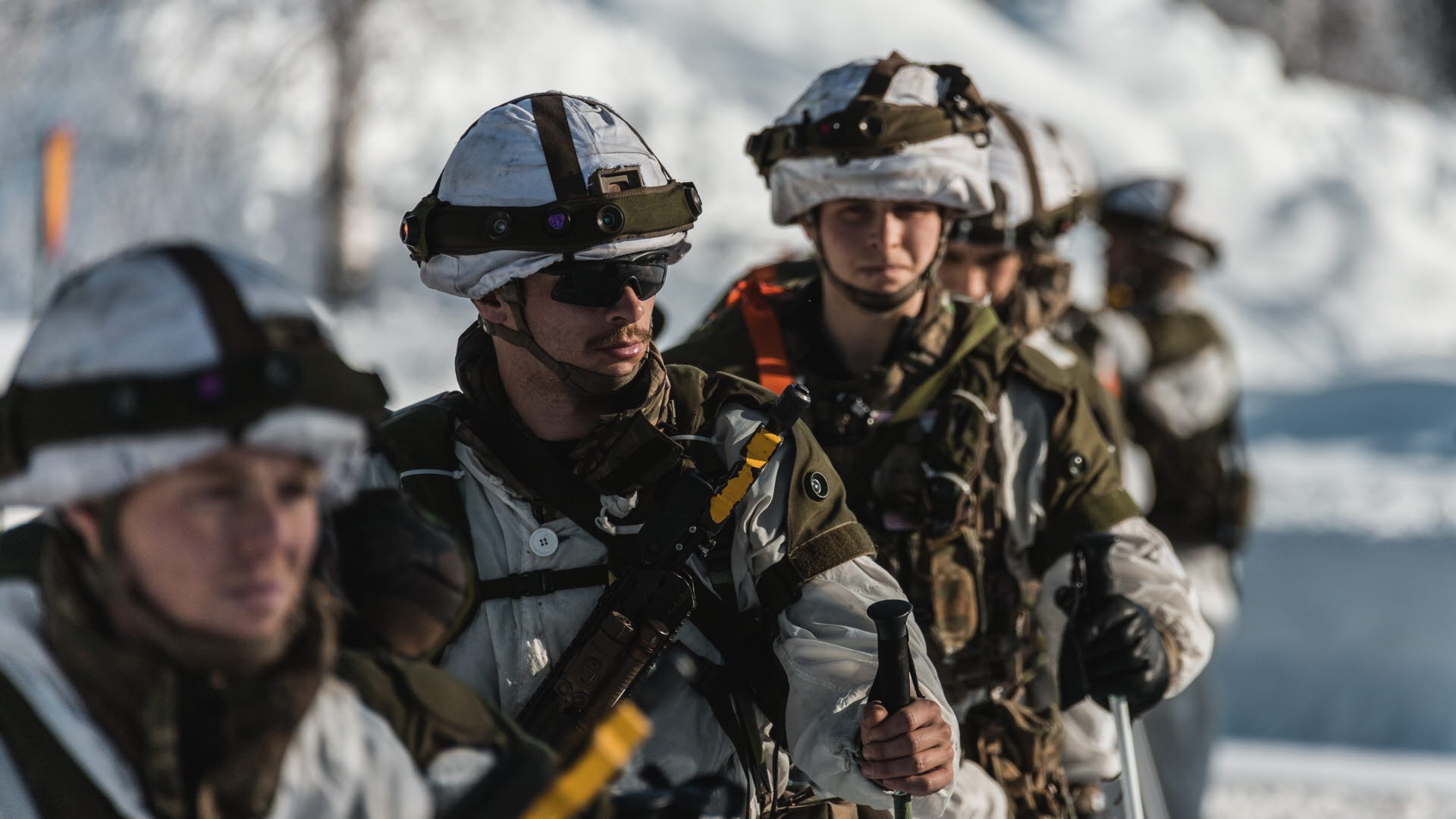 British Royal Marines during the Northern Wind 2019 exercise. Source: forsvarsmakten.se
British Royal Marines during the Northern Wind 2019 exercise. Source: forsvarsmakten.seIn the earlier version of defense strategy for 2016–2020, Swedish military experts devoted much room to enhancing cooperation with Finland. Under the document, the partnership with Finland was expected to cover operational planning and preparations to defend the territorial integrity of these two states. During a ceremony in Turku, in July 2018, Finnish and Swedish senior officials signed a document outlining, among other things, joint defense drills and access to each other’s territory for military forces. The United States signed bilateral defense cooperation agreements with both Sweden and Finland in and sometime later, in May[20] 2018, a tripartite statement on boosting defense cooperation. In 2017, U.S. Secretary of Defense James Mattis assured Sweden’s defense minister that the United States “will stand with Sweden,” adding that “it’s not a NATO ally, but it is still, from our point of view, a friend and an ally.”[21] The Swedish-Finnish defense cooperation has gained momentum due to a set of regional initiatives, one of which is Nordic-Baltic Cooperation, or NB8, a local cooperation format that has brought together Nordic countries and Baltic countries (Finland, Sweden, Norway, Iceland, Denmark, Estonia, Latvia and Lithuania). Yet what Sweden sees as critical for its defense is the Nordic Defence Cooperation (NORDEFCO), a collaboration among the Nordic countries chiefly in the area of defense, established back in 2009. In an article for the Norwegian daily Aftenposten published in April 2015, defense ministers of Norway, Sweden, Finland and Denmark as well as Iceland’s prime minister outlined what was later branded at the format’s policy paper. In their article, the top Nordic officials urged for nurturing a closer military partnership between their states while seeing Russia as a high threat to the region.[22]
In 2013, Anne-Grete Strøm-Erichsen, who at that time served as Norway’s defense minister, publicly stated “it is uncertain whether Norway will help if Sweden, and presumably Finland, is attacked because they are not members of NATO.” The government in Stockholm is right to be fearful of its neutrality not being respected by Russia if a war breaks out, despite its neutral status. Hence an increase in military spending, ambitious plans to expand Sweden’s armed forces and the search of potential war allies all over the Baltic region.
Author: Grzegorz Kuczyński – Director of Eurasia Program
Grzegorz Kuczyński graduated in history at the University of Bialystok and specialized Eastern studies at the University of Warsaw. He is an expert on eastern affairs. He worked as a journalist and analyst for many years. He is the author of many books and publications on the inside scoop of Russian politics.
[1] https://www.government.se/speeches/2016/02/statement-of-government-policy-in-the-parliamentary-debate-on-foreign-affairs-2016/
[2] https://www.defence24.pl/szwedzka-rewolucja-wojskowa
[3] https://oaspl.org/2016/06/06/miedzy-rosja-a-nato-co-zrobi-polnocny-tandem/
[4] https://www.svt.se/nyheter/utrikes/rysslands-sverigeambassador-vi-har-inte-ockuperat-krim
[5] https://tass.ru/pmef-2017/articles/4302587
[6] https://www.mid.ru/foreign_policy/news/-/asset_publisher/cKNonkJE02Bw/content/id/2258885
[7] https://oaspl.org/2016/06/06/miedzy-rosja-a-nato-co-zrobi-polnocny-tandem/
[8] https://oaspl.org/2016/06/06/miedzy-rosja-a-nato-co-zrobi-polnocny-tandem/
[9] https://www.defence24.pl/szwecja-zapowiedz-cwiczenia-total-defence-2020-wojsko-i-obywatele-razem-w-obronie-kraju
[10] https://warsawinstitute.org/pl/szwedzka-obrona-totalna/
[11] https://warsawinstitute.org/pl/szwecja-gotuje-sie-na-rosyjska-inwazje/
[12] Szwecja/Rząd zapowiada podatek, by sfinansować większy budżet obronny, Polish Press Agency, August 31, 2019.
[13] https://www.defence24.pl/szwedzka-rewolucja-wojskowa
[14] https://www.thelocal.se/20170724/no-island-as-important-as-gotland-says-us-military-chief-ben-hodges-europe-nato-russia-sweden
[15] Szwecja/ Nowa strategia zakłada działania obronne przez trzy miesiące, Polish Press Agency, May 14, 2019.
[16] https://www.defence24.pl/szwedzka-rewolucja-wojskowa
[17] https://oaspl.org/2016/06/06/miedzy-rosja-a-nato-co-zrobi-polnocny-tandem/
[18] Szwecja/ Nowa strategia zakłada działania obronne przez trzy miesiące, Polish Press Agency, May 14, 2019.
[19] https://nationalinterest.org/blog/buzz/why-russia-was-watching-these-wargames-66817
[20] https://www.defmin.fi/files/4231/Trilateral_Statement_of_Intent.pdf
[21] https://www.defense.gov/Newsroom/Transcripts/Transcript/Article/1186980/remarks-by-secretary-mattis-and-minister-hultqvist-at-the-pentagon/
[22] https://oaspl.org/2016/06/06/miedzy-rosja-a-nato-co-zrobi-polnocny-tandem/
The publication of the Special Report was co-financed from the funds of the Civic Initiatives Fund Program 2018.
The concept of analytical material was created thanks to co-financing from the Civil Society Organisations Development Programme 2019.
Selected activities of our institution are supported in cooperation with The National Freedom Institute – Centre for Civil Society Development.
All texts published by the Warsaw Institute Foundation may be disseminated on the condition that their origin is credited. Images may not be used without permission.

















